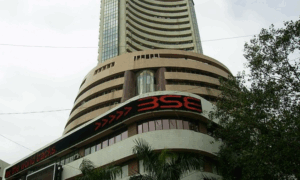
Image : Representational only
Foreign Portfolio Investors (FPIs) have trained their sight towards India, becoming net buyers in the country’s stock market in the calendar year 2023.
According to ANI , In December, especially, they made a beeline to invest in Indian stock markets, with a cumulative accumulation of Rs 66,135 crore. To put it into context, the entire year saw an inflow of about Rs 171,107 crore, and notably, over one-third of it came in December.
In November, the FPI inflow was Rs 9,001 crore, data from the National Securities Depository (NSDL) showed.
Before November, FPI participation in Indian stocks was lukewarm, and they had turned net sellers. They sold Rs 14,768 crore and Rs 24,548 crore, in September and October, respectively. Before that, FPIs bought Indian stocks worth Rs 7,936 crore, Rs 11,631 crore, Rs 43,838 crore, Rs 47,148 crore, Rs 46,618 crore, and Rs 12,262 crore in March, April, May, June, July, and August respectively, data showed.
The strong inflow of funds from foreign portfolio investors (FPIs) lately also supported the stocks to march towards all-time highs.
Firm GDP growth forecast, inflation at manageable levels, political stability at the central government level, and signs that the central banks world over are done with their monetary policy tightening have painted a bright picture for India – which many agencies have termed the fastest-growing major economy.
The latest inflow particularly comes at a time when India reported strong quarterly growth, maintaining its fastest-growing major economy tag.
The Indian economy grew 7.6 per cent during the July-September quarter of the current financial year 2023-24, remaining the fastest-growing major economy. India’s GDP growth for the April-June quarter grew 7.8 per cent.
Harjeet Singh Arora, Managing Director of Mastertrust, a stock trading and investment broker company, recently said, “The market in 2023 had been a roller coaster. There was a net inflow of funds from FII during the earlier part of the year from March to July which was followed by a net outflow of funds for the next three months due to the rising tension and increasing global interest rates. The foreign institutional investors then again started buying in November due to the positive sentiments around the Indian markets.”
“The BJP’s victories in three states fuelled optimism in the Indian markets, particularly due to its strong performance in the Hindi heartland, a key support base. The market anticipates the ruling government’s return, and any outcome contrary to investors’ expectations may lead to a downturn in the stock market,” Arora added.
While maintaining the status quo in key policy rates for the fifth straight occasion, the RBI has raised the growth forecast for the financial year 2023-24 by 50 basis points to 7 per cent. In its October meeting, the RBI forecast 2023-24 growth at 6.5 per cent.
IMF, in its Article IV consultation report, which reviews a country’s current and medium-term economic outlook, earlier this month said that India’s growth is expected to remain strong, supported by macroeconomic and financial stability.”
Despite widespread global uncertainty, India is expected to grow above 6 per cent over the next five years driven by continued strong investment, still-growing private consumption, and digitalization-driven productivity gains,” the IMF had noted.
Coming to Indian stock markets, the past 12 months have been stellar for investors who parked their money in Indian stocks. Though there has been some turbulence, first during the Adani-Hindenburg episode and lately during the initial days of the Israel-Hamas war, the calendar year 2023 gave handsome monetary dividends to stock market investors.
In 2023, Sensex and Nifty gained 18-19 per cent, on a cumulative basis. The indices had gained a mere 3-4 per cent in 2022.
[the_ad id=”55723″]


















